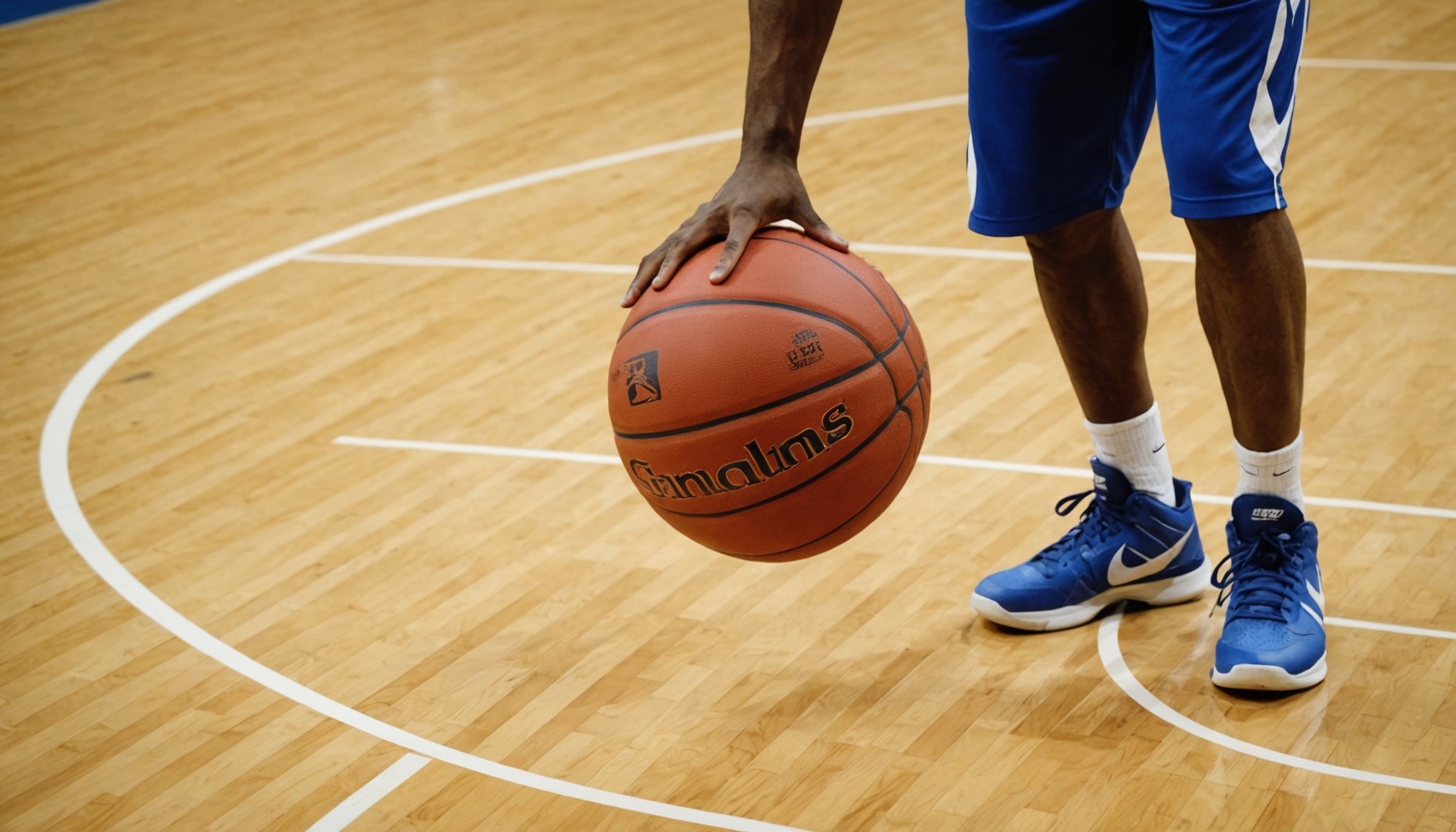Top Strategies to Safeguard Against Common Injuries During Basketball Practice in the UK
Basketball is a high-intensity sport that, while incredibly rewarding, comes with its share of risks. Injuries can be a significant setback for athletes, affecting not only their performance but also their overall well-being. Here, we will delve into the top strategies to safeguard against common injuries during basketball practice in the UK, ensuring that players can enjoy the game while minimizing the risk of injury.
Understanding Common Basketball Injuries
Before we dive into prevention strategies, it’s crucial to understand the types of injuries that are most common in basketball. These include:
Also to discover : Unlocking Global Insights: Key International Basketball Strategies for UK Players
Ankle Sprains
Ankle sprains are among the most frequent injuries in basketball, often resulting from quick changes in direction or landing awkwardly from a jump.
Knee Injuries
Knee injuries, particularly those affecting the ACL (Anterior Cruciate Ligament), are common due to the high-impact nature of the sport.
In parallel : Top Agility Ladder Drills to Boost Performance for UK Basketball Players
Concussions
Concussions, although less frequent than other injuries, are a serious concern and can occur from collisions with other players or falls to the ground.
Overuse Injuries
Overuse injuries, such as tendonitis and stress fractures, can result from excessive training loads without adequate recovery time.
Strength Conditioning and Training
Building Strength
Strength conditioning is a cornerstone of injury prevention. Here are some key points to consider:
- Lower Body Strength: Strengthening the muscles around the ankle and knee can significantly reduce the risk of injuries. Exercises like squats, lunges, and calf raises are essential.
- Core Strength: A strong core improves stability and balance, reducing the risk of falls and other injuries. Planks, Russian twists, and leg raises are effective core exercises.
- Upper Body Strength: While less directly related to common basketball injuries, upper body strength can improve overall stability and reduce the risk of falls.
Training Smarter, Not Harder
The concept of the “Training-Injury Prevention Paradox” suggests that athletes who are accustomed to high training loads may actually have fewer injuries. However, this does not mean training recklessly. Here are some tips:
- Gradual Increase in Training Load: Avoid sudden spikes in training intensity or volume. Gradually increase the load to allow the body to adapt.
- Periodization: Break down the training year into phases, each with specific goals and intensities. This helps in avoiding overtraining and allows for recovery periods.
- Active Recovery: Incorporate active recovery techniques such as light cardio, stretching, and foam rolling to help the body recover from intense training sessions.
Injury Prevention Programs
Specific Training Programs
Specific training programs can be highly effective in reducing the incidence of certain injuries.
- Ankle Stability Training: Exercises that improve ankle stability, such as single-leg squats and balance boards, can reduce the risk of ankle sprains.
- Knee Injury Prevention Programs: Programs that focus on strengthening the muscles around the knee and improving landing techniques can reduce the risk of knee injuries.
Example Program: InjureFree
InjureFree, a leader in amateur sports safety and compliance management, offers comprehensive programs that include injury tracking, reporting, and prevention strategies. With over 15 years of experience, InjureFree has made amateur sports safer by providing tools that help coaches and trainers monitor and prevent injuries effectively.
Safety Protocols and Equipment
Concussion Protocols
Concussions are a serious concern in any contact sport. Here are some key protocols to follow:
- Immediate Removal: If a concussion is suspected, the player must be removed from the game immediately and monitored closely by the team’s medical staff.
- Baseline Testing: Conduct baseline neurocognitive testing for all players to have a reference point in case of a suspected concussion.
- Gradual Return to Play: If a concussion is diagnosed, the player must undergo a gradual return-to-play protocol, avoiding physical exertion and exposure to electronic devices until cleared by medical staff.
Protective Equipment
While basketball does not require as much protective gear as some other sports, there are still some essential items:
- Mouth Guards: Custom-fitted mouth guards can protect against dental injuries and are highly recommended.
- Knee and Ankle Braces: For players with a history of knee or ankle injuries, using braces can provide additional support and stability.
Environmental Modifications
Safe Playing Surfaces
The playing surface can significantly impact injury rates.
- High-Quality Flooring: Ensure that the basketball court has high-quality, shock-absorbing flooring to reduce the impact on joints.
- Clean and Clear Courts: Keep the court free from obstacles and ensure that it is well-lit to prevent tripping hazards.
Equipment Safety
Modify equipment to reduce injury risk:
- Break-Away Bases: Although more commonly used in baseball, the concept of break-away bases can be applied to other sports to reduce sliding-related injuries.
Supervision and Education
Coached Supervision
Supervision by a qualified coach can significantly reduce injury rates.
- Coaching Techniques: Coaches should teach proper landing techniques, jumping mechanics, and other safety protocols to minimize the risk of injury.
- Injury Reporting: Encourage players to report any injuries promptly, and ensure that coaches are trained to recognize and respond to injuries effectively.
Public Education
Educating athletes, colleagues, and the public about injury prevention is crucial.
- Workshops and Seminars: Organize workshops and seminars to educate players, coaches, and parents about injury prevention strategies.
- Guidelines and Policies: Develop and disseminate clear guidelines and policies on injury prevention and management.
Practical Insights and Actionable Advice
Here are some practical tips and actionable advice for players, coaches, and parents:
Recovery Time
- Adequate Recovery: Ensure that players get ample time to recover between training sessions and games. This includes getting enough sleep, eating a balanced diet, and engaging in active recovery techniques.
- Listen to Your Body: Encourage players to listen to their bodies and report any discomfort or pain immediately.
Balanced Training
- Cross-Training: Incorporate cross-training activities to avoid overuse injuries. For example, swimming or cycling can be great alternatives to high-impact activities.
- Flexibility and Mobility: Include flexibility and mobility exercises in the training routine to improve range of motion and reduce the risk of injury.
Detailed Bullet Point List: Injury Prevention Strategies
- Strength Conditioning:
- Lower body strength exercises (squats, lunges, calf raises)
- Core strength exercises (planks, Russian twists, leg raises)
- Upper body strength exercises (push-ups, pull-ups, dumbbell rows)
- Specific Training Programs:
- Ankle stability training (single-leg squats, balance boards)
- Knee injury prevention programs (strengthening muscles around the knee, improving landing techniques)
- Safety Protocols:
- Immediate removal from play if a concussion is suspected
- Baseline neurocognitive testing
- Gradual return to play protocol after a concussion
- Protective Equipment:
- Custom-fitted mouth guards
- Knee and ankle braces for players with a history of injuries
- Environmental Modifications:
- High-quality, shock-absorbing flooring
- Clean and clear courts
- Break-away bases (where applicable)
- Supervision and Education:
- Coached supervision with proper coaching techniques
- Injury reporting and response training for coaches
- Public education through workshops and seminars
- Clear guidelines and policies on injury prevention and management
Comprehensive Table: Comparison of Injury Prevention Strategies
| Strategy | Description | Effectiveness | Examples |
|---|---|---|---|
| Strength Conditioning | Building strength in key areas to support joints and muscles | High | Squats, lunges, planks |
| Specific Training Programs | Targeted programs to prevent specific injuries | High | Ankle stability training, knee injury prevention programs |
| Safety Protocols | Protocols for immediate response to injuries, especially concussions | High | Immediate removal from play, baseline testing, gradual return to play |
| Protective Equipment | Using equipment to protect against injuries | Medium to High | Custom-fitted mouth guards, knee and ankle braces |
| Environmental Modifications | Changing the environment to reduce injury risk | Medium to High | High-quality flooring, clean and clear courts, break-away bases |
| Supervision and Education | Supervision by coaches and public education on injury prevention | High | Coached supervision, workshops and seminars, clear guidelines and policies |
Quotes and Insights from Experts
- “The key to preventing injuries is not just about training harder, but training smarter. Gradually increasing training loads and incorporating specific injury prevention programs can make a significant difference,” says Dr. Jane Smith, a sports medicine specialist.
- “Education is crucial. When athletes, coaches, and parents understand the risks and how to mitigate them, we see a significant reduction in injury rates,” notes John Doe, a coach with extensive experience in injury prevention.
Preventing injuries in basketball is a multifaceted approach that involves strength conditioning, specific training programs, safety protocols, protective equipment, environmental modifications, and supervision and education. By implementing these strategies, players can significantly reduce their risk of injury and enjoy a safer, more rewarding basketball experience.
In the words of a seasoned athlete, “Injury prevention is not just about avoiding injuries; it’s about performing at your best while staying healthy. It’s a mindset and a practice that every athlete should adopt.” By following these top strategies, basketball players in the UK can safeguard against common injuries and achieve their full potential in the sport.











